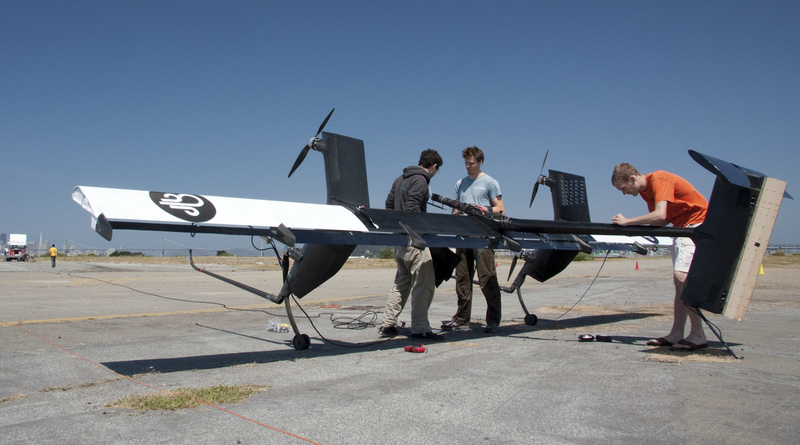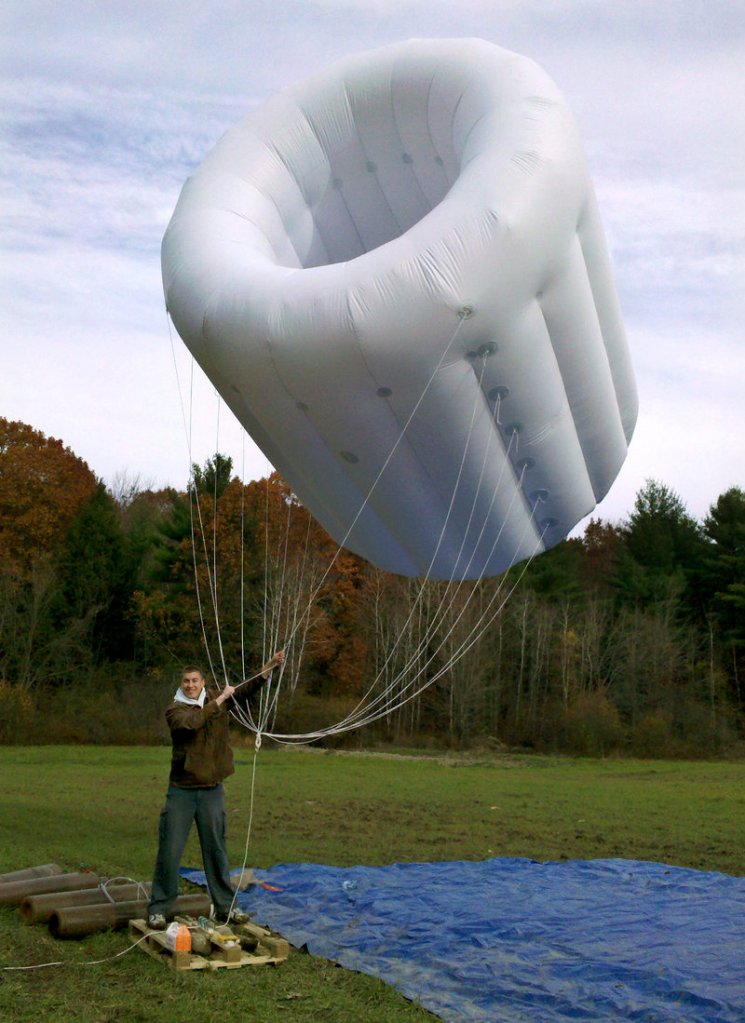BOSTON – The world’s strongest winds race high in the sky, but that doesn’t mean they’re out of reach as a potentially potent energy source.
Flying, swooping and floating turbines are being developed to turn high-altitude winds into electricity. The challenges are huge, but so is the potential. Scientists estimate the energy in the jet streams is 100 times the power used worldwide annually.
Cristina Archer, an atmospheric scientist at California State University in Chico, said there’s “not a doubt anymore” that high-altitude winds will be tapped for power.
“This can be done,” she said.
The question is, when? Some companies project their technology will hit the market by 2015 or 2016, but Fort Felker at the National Renewable Energy Laboratory says the industry is 10 years away from making a meaningful contribution to the nation’s electricity demands.
High-altitude wind power is similar to ground wind in the 1970s — facing questions but soon to prove its viability, said PJ Shepard of Oroville, Calif.-based Sky WindPower, which is developing a “flying electric generator.”
“It’s kind of like the adjustment folks had to make when the Wright brothers started flying airplanes,” she said.
The lure of high-altitude wind is simple: Wind speed generally increases with its height above the ground as surface friction diminishes. Each time wind speed doubles, the amount of energy it theoretically holds multiplies by eight times.
The most powerful winds circulate in the jet streams, which are found four to 10 miles off the ground and carry winds that regularly break 100 mph.
High-altitude wind companies are focusing for now below a 2,000-foot ceiling, above which complex federal air-space restrictions kick in.
Adam Rein, co-founder of Boston-based Altaeros Energies, said his company calculates that winds at the 2,000-foot level are up to 2 1/2 times stronger than winds that can be reached by a typical 350-foot land turbine.
High-altitude wind advocates say their smaller, lightweight turbines will be far cheaper to build and deploy than windmills with huge blades and towers drilled into land or the sea floor.
With wide-scale use, advocates see a range of prices, from something comparable to land wind’s current 9 or 10 cents per kilowatt hour down to an astonishingly low 2 cents per kilowatt hour.
“They are projecting crazy numbers,” Archer said. “I’m not saying that it’s true. … But it’s really the lowest, the cheapest energy source, possibly.”
As the turbines eventually aim higher, advocates say there are lots of remote and offshore no-fly areas where they won’t interfere with aircraft and have minimal interaction with people.
Still, any nearby residents must be convinced there’s no danger from falling turbines while accepting a view that includes flying objects attached to long tethers that carry the energy to the ground.
And each turbine concept awaits testing on its reliability, durability and effectiveness, said the National Renewable Energy Laboratory’s Felker.
Keeping the turbines operating autonomously over long periods in changing weather may be the biggest obstacle, Felker said.
“What do you do when a thunderstorm comes by? Do you recover (the device)? Do you land? … How do you operate in the real world?” he asked.
Different companies have proposed answering that question in different ways.
A “kite” being developed by Makani Power of Alameda, Calif., looks like a glider with four high-speed rotors that launch it into flight, then switch modes to generate electricity that’s carried down the tether.
An onboard computer steers the kite in a wide circle, mimicking the path of the tip of a giant wind turbine blade. That allows the device to interact with a larger wind area, increasing the amount of energy it can capture in the same way that increasing the size of a sail increases the potential speed of a sailboat, said Damon Vander Lind, Makani’s chief engineer.
The kite can also stay up in high winds and power itself to land in low winds, he said.
Sky WindPower’s generator has four rotors, each 35 feet in diameter, that transmit power down the tether. It’s built to hover, rather than swoop or circle, Shepard said. While moving turbines can actually fly faster than the wind by flying crosswind, they can’t fly as high, she said.
“We can get up a little higher than they can. We can get to higher-velocity winds and make up for it,” Shepard said.
Altaeros is developing a stationary turbine that sits inside a 60-foot-tall, helium-filled shroud that acts as a wind funnel. Similar blimp-like devices, called aerostats, have long been used to keep heavy equipment aloft, such as government surveillance radar tethered up to 15,000 feet above U.S. borders.
“Our view is that our approach is less risky, because we’re using a technology that’s been out there for decades,” Rein said.
Send questions/comments to the editors.




Success. Please wait for the page to reload. If the page does not reload within 5 seconds, please refresh the page.
Enter your email and password to access comments.
Hi, to comment on stories you must . This profile is in addition to your subscription and website login.
Already have a commenting profile? .
Invalid username/password.
Please check your email to confirm and complete your registration.
Only subscribers are eligible to post comments. Please subscribe or login first for digital access. Here’s why.
Use the form below to reset your password. When you've submitted your account email, we will send an email with a reset code.